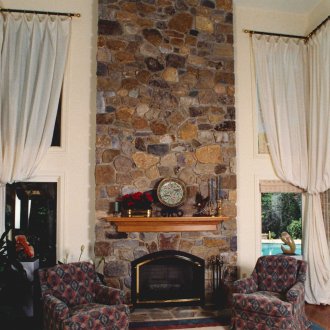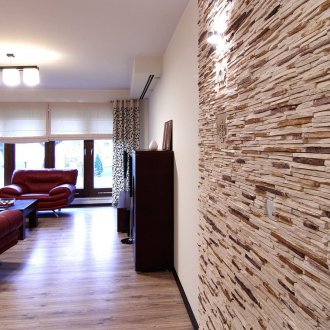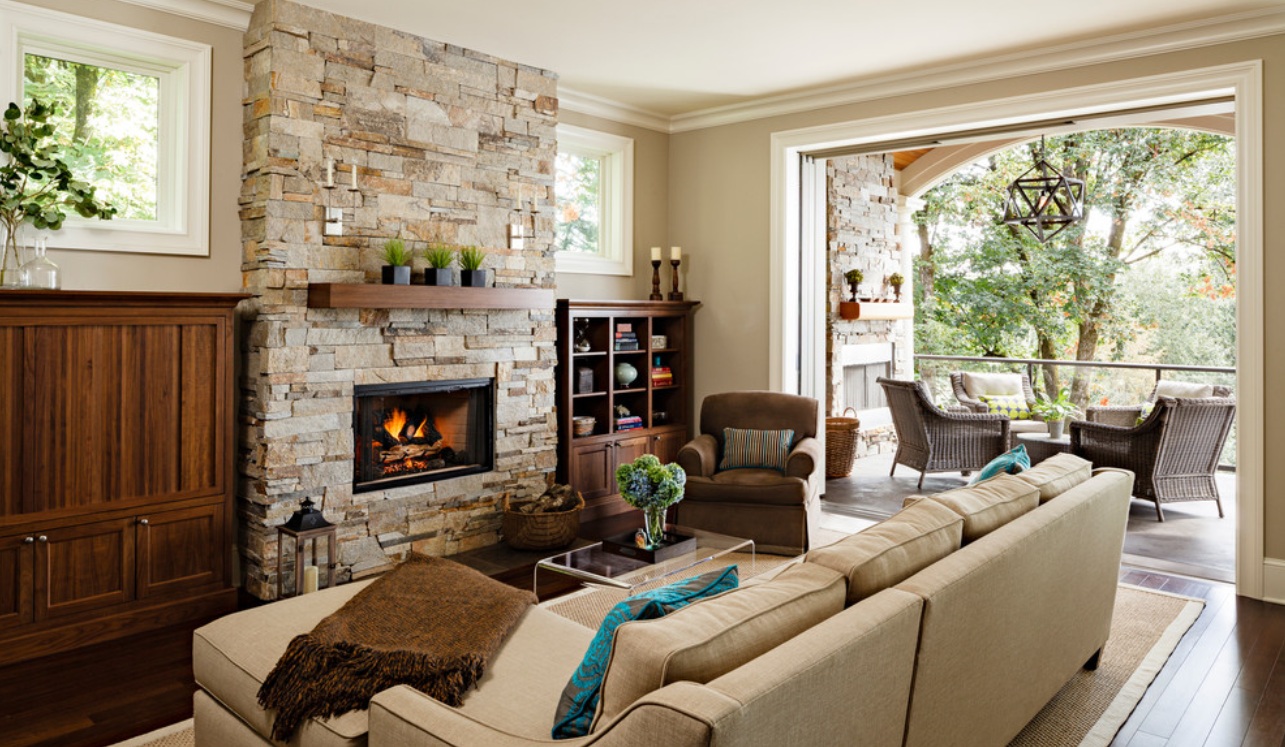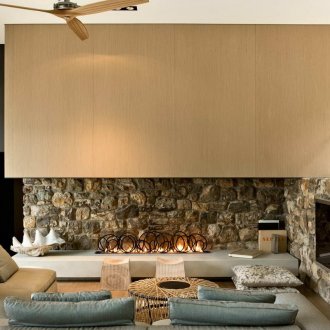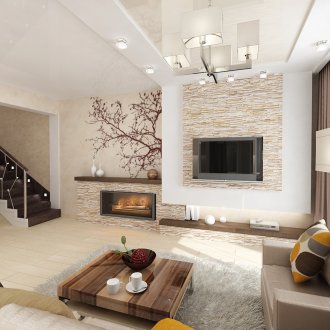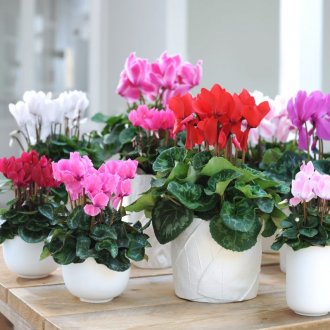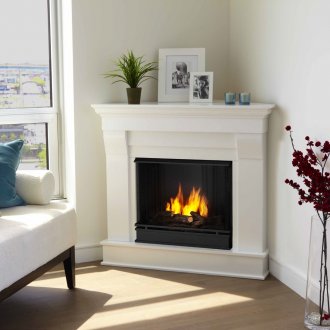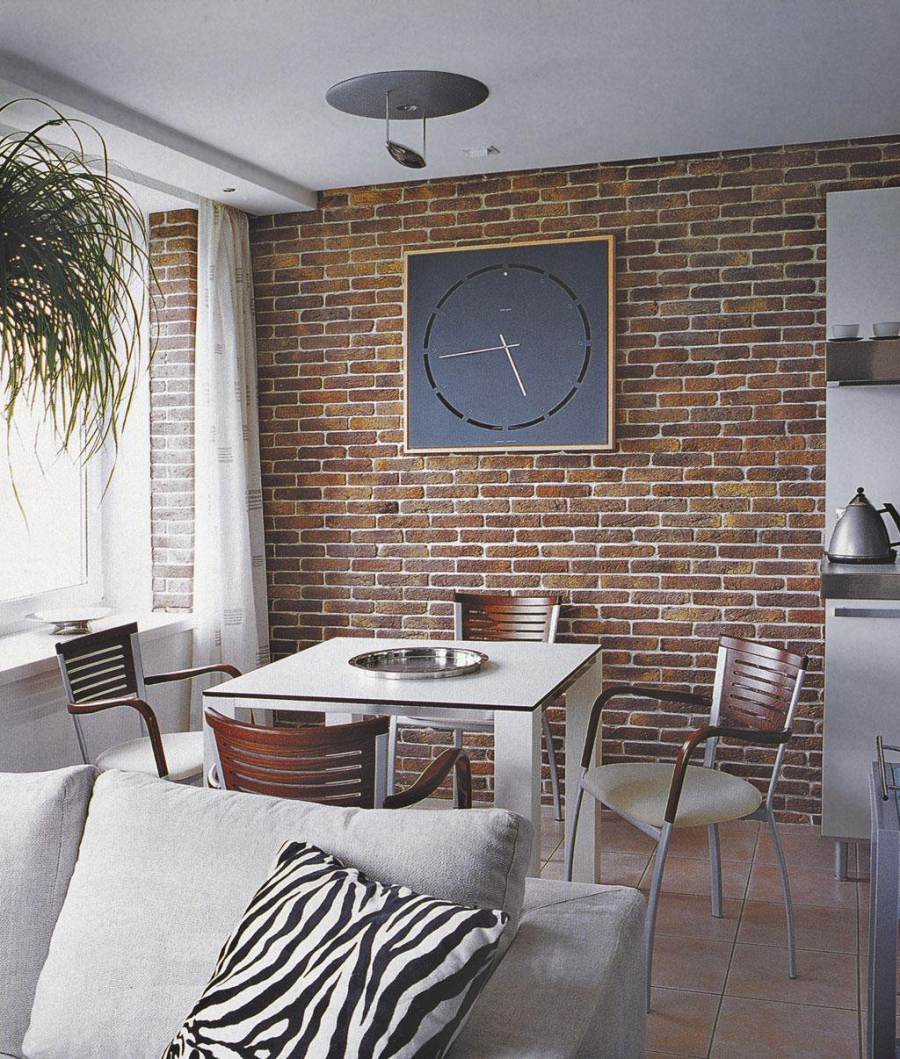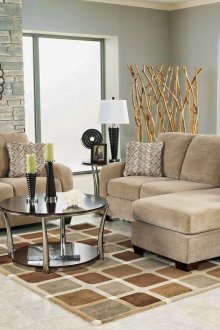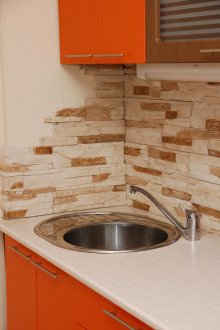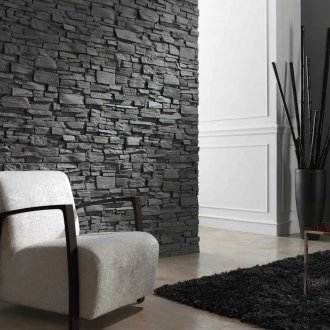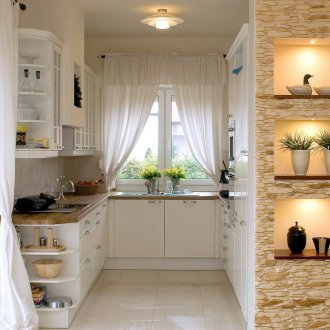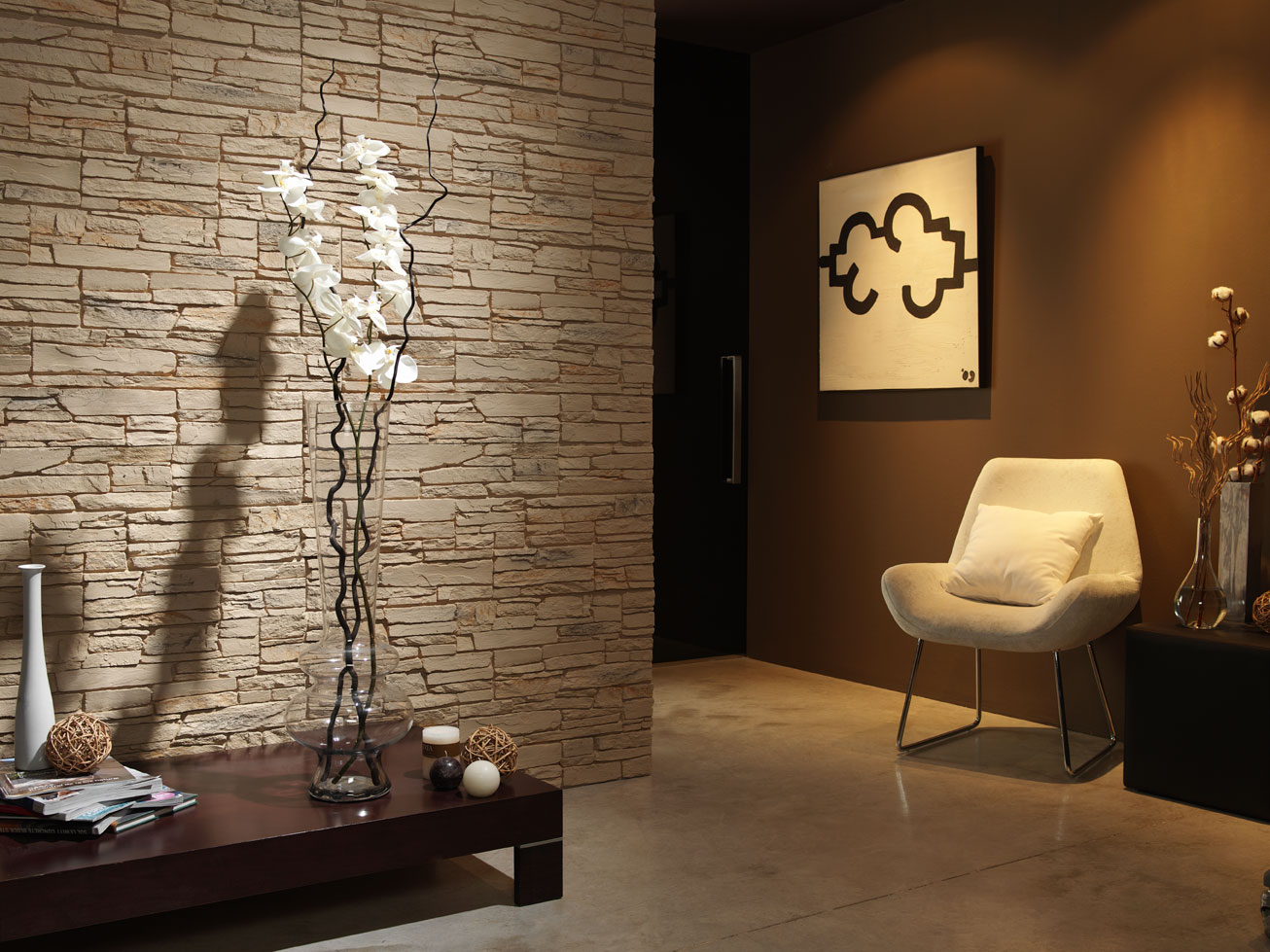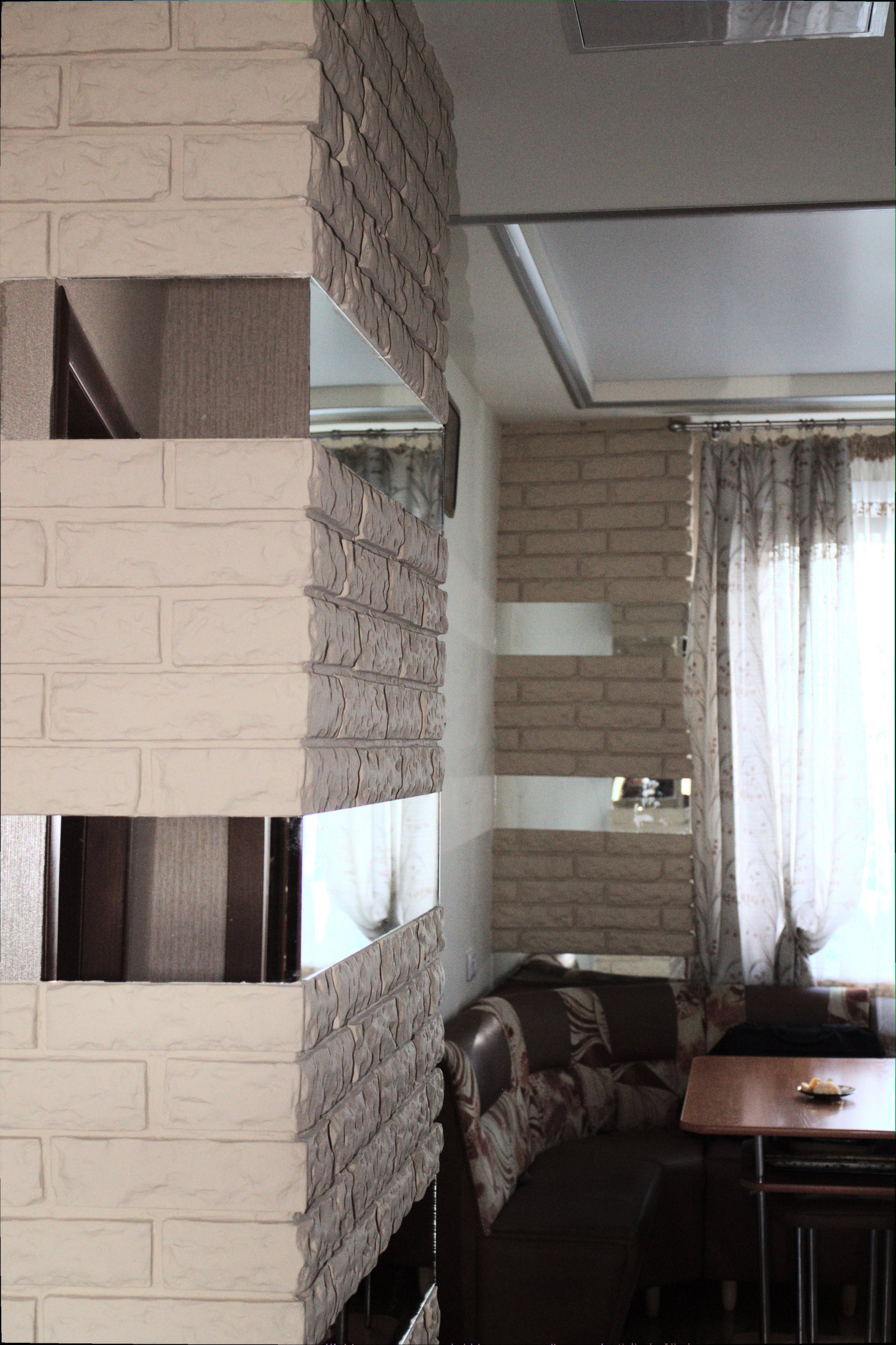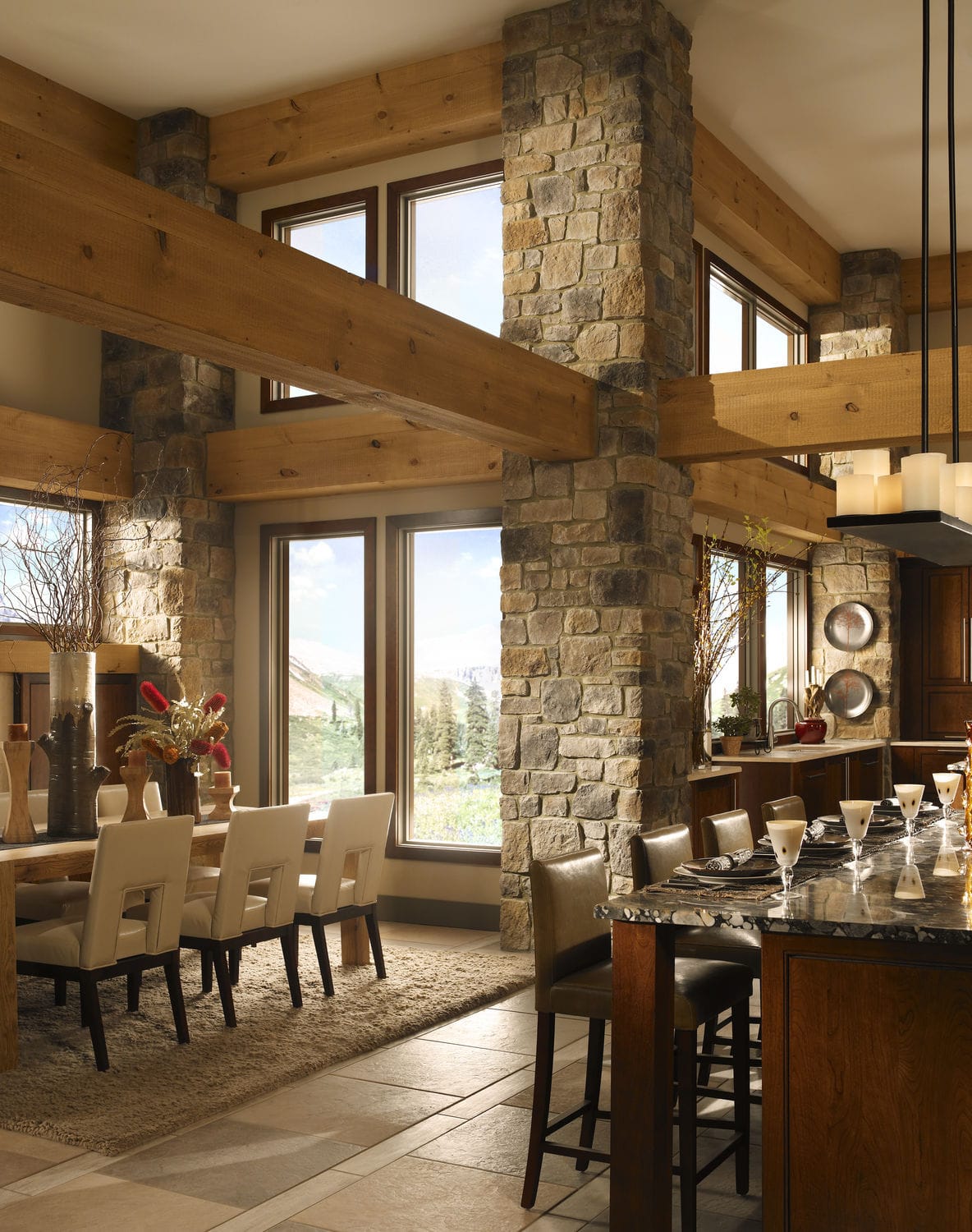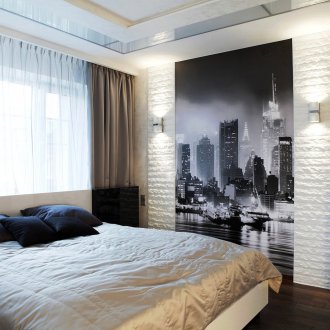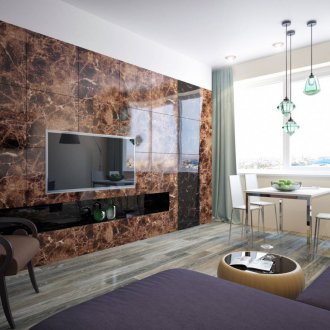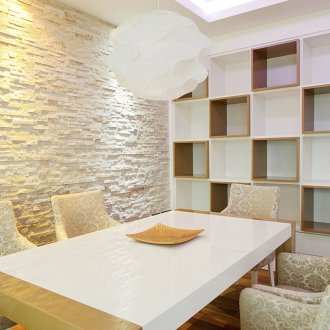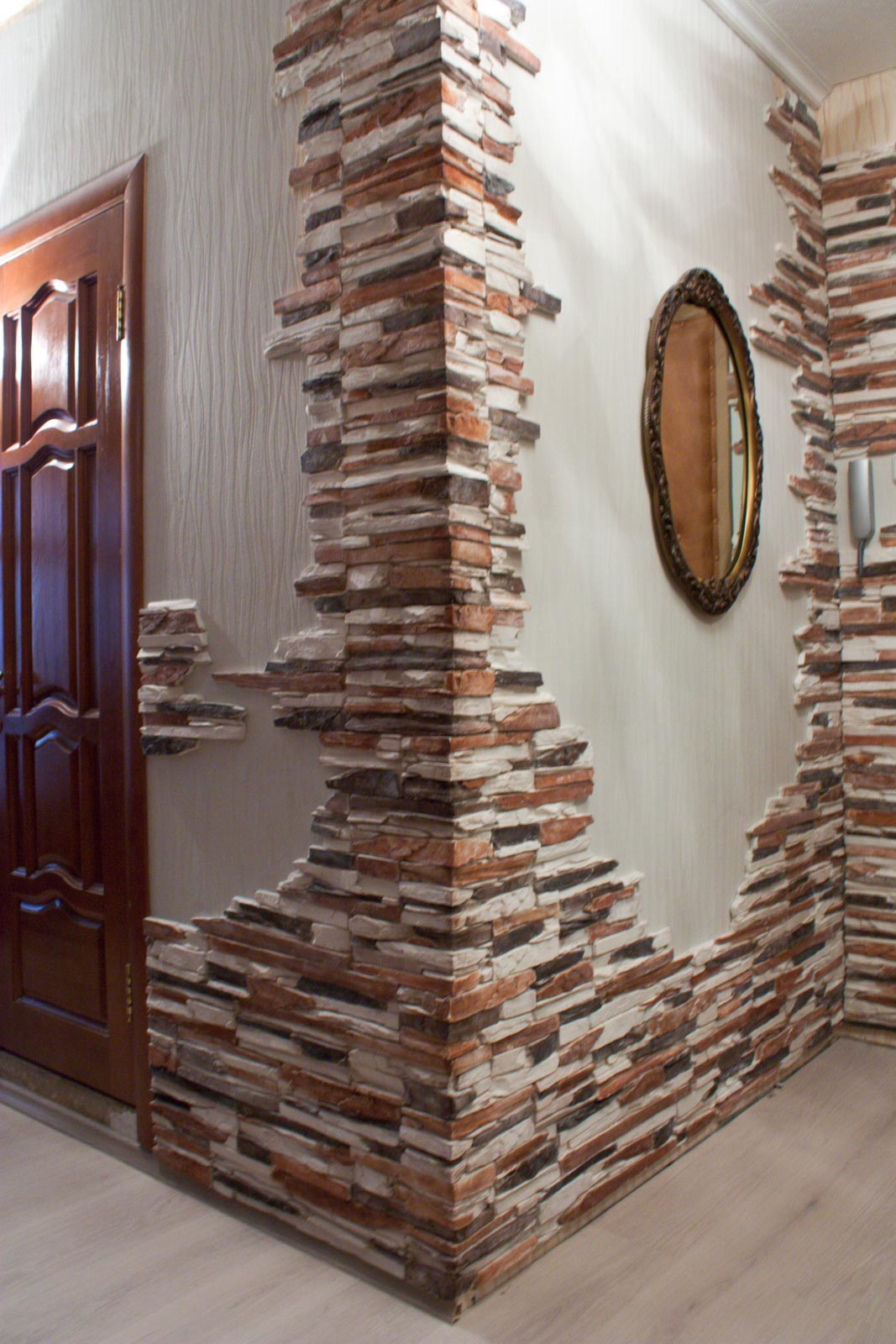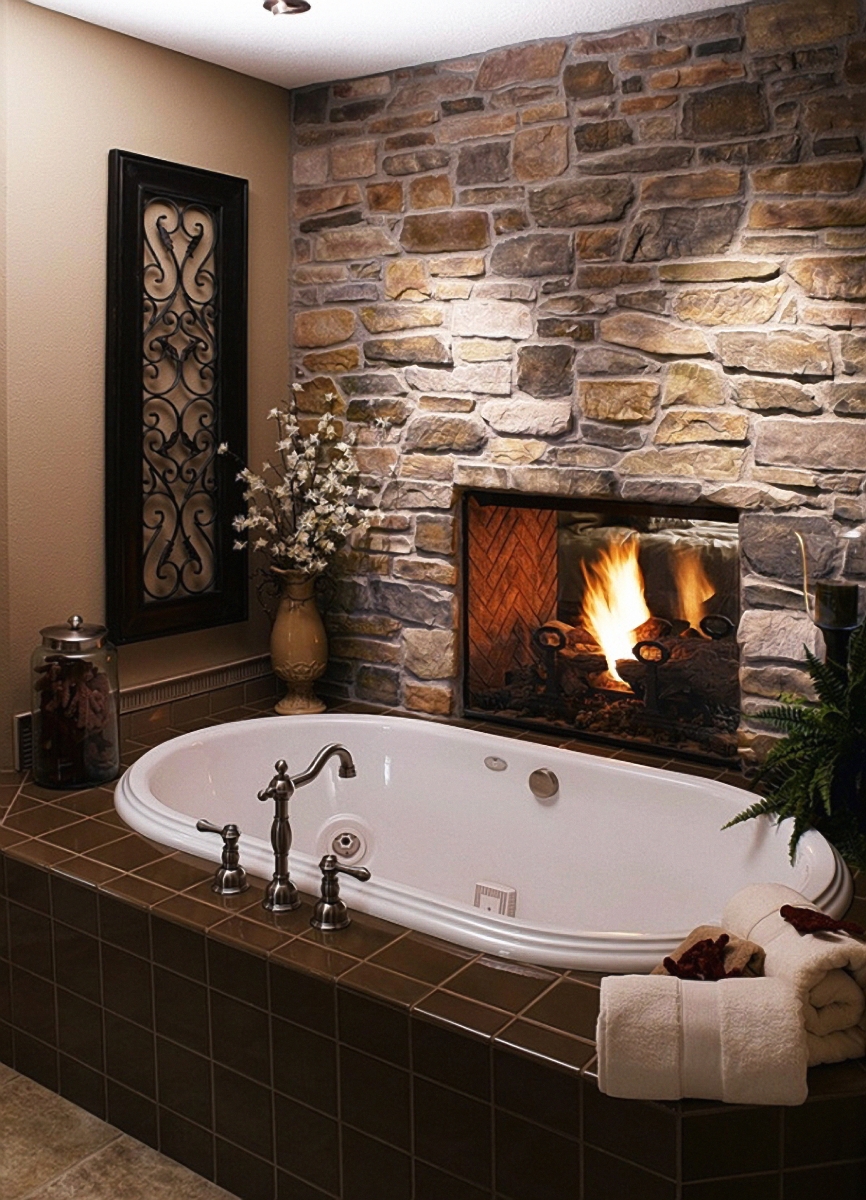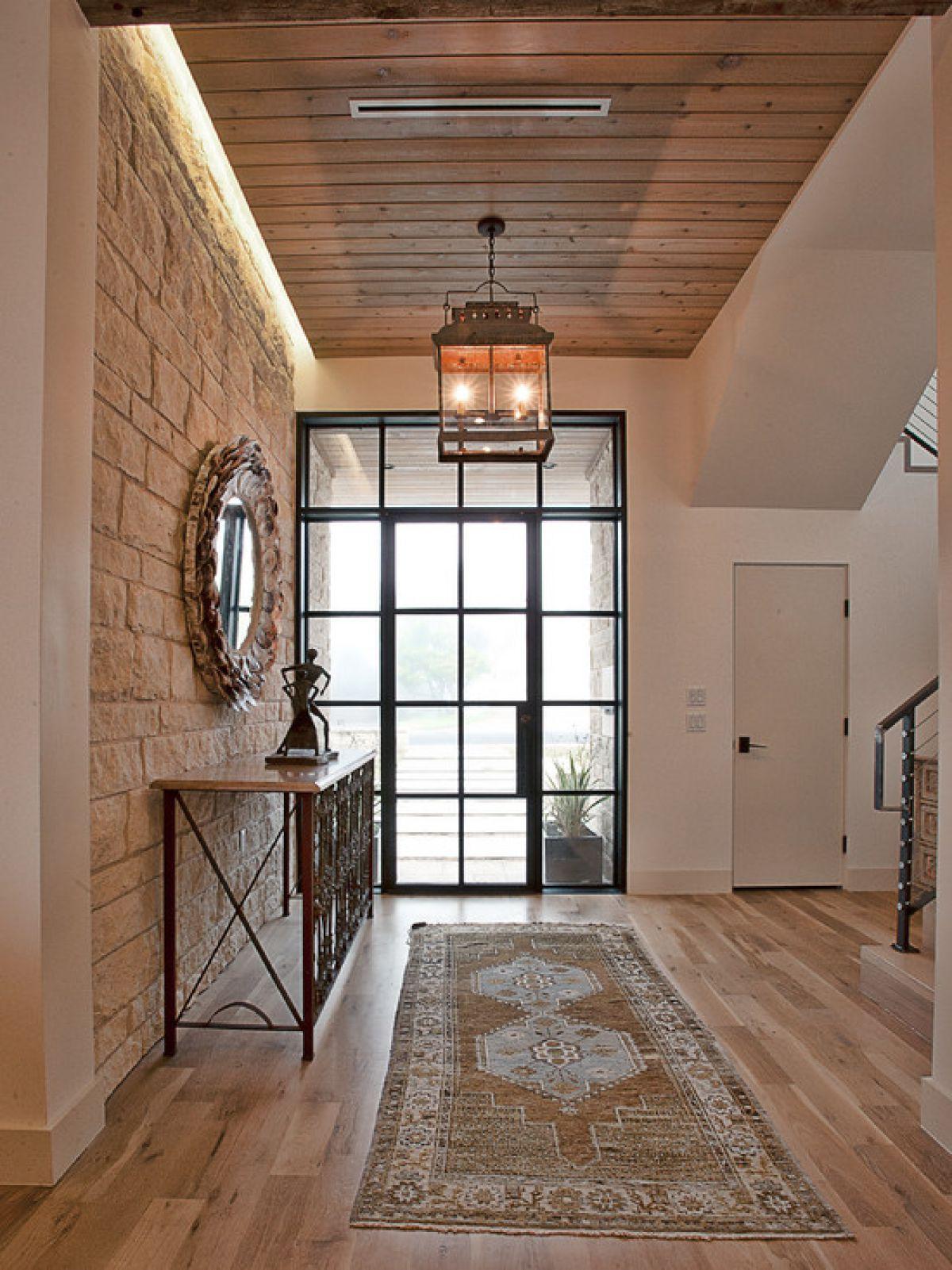Gypsum decorative stone in the interior: new opportunities (23 photos)
Content
Gypsum decorative stone is a spectacular finish, the aesthetic and functional properties of which allow it to be used both in the exterior design and in the interior.
Features of the gypsum decor
Gypsum tile successfully replaces the natural cladding of marble and granite, perfectly imitates the texture of the original, while it has an impressive number of advantages. The advantages of plaster coating in comparison with a natural stone counterpart:
- lightness of the product - unlike natural “brothers”, decorative gypsum tile weighs several times less. It is used in facing of capital walls, art constructions and interior partitions that cannot be subjected to additional load;
- simplicity of laying - it is easy to cope with the implementation of finishing work, even without experience in this field;
- accessibility - gypsum decorative stone is sold in an inexpensive segment. Democratic material is due to the cheapness of raw materials and the ease of the production process;
- A wide range of choices - stone tiles are presented in a huge variety of colors, shapes, textures. If you wish, you can order an exclusive version of the product on a plaster basis of the author's work;
- the possibility of independent production - decorative gypsum stone for interior decoration is easy to cast with your own hands at home. It requires the availability of high-quality raw materials, an elementary set of devices and tools, a creative approach to the process and a desire to create.
The disadvantages of gypsum tiles under the stone include:
- brittleness of the material - the product is easily deformed under mechanical stress, an impact of insignificant strength is fraught with a crack or chip. Large-format gypsum tiles are particularly prone to deformation;
- moisture absorption - gypsum absorbs moisture well, and the product subsequently quickly collapses. To prevent this effect, it is recommended to treat the gypsum surface with a special protective compound.
With strict implementation of the production and laying technology, decorative gypsum stone for interior decoration can emphasize the advantages of interior design and hide the flaws of the wall surface of a structural and aesthetic nature.
Varieties of gypsum-based decorative stone
Using gypsum finishes, it is easy to imitate a natural stone with natural properties. You can make tiles with a smooth surface or perform in the form of a product with peculiar irregularities, duplicate chips and other natural features of the material. When planning the final wall covering in interiors of various stylistic concepts, it is easy to choose among the offers the optimal model of a plaster image of a stone:
- the chipped surface imitates the uneven structure of the stone base with the edges as if hammered. It is popular in the design of interiors of a modern style, successfully fits into the design of a home office, is often found in the decor of the lobby of public buildings, looks harmonious in the arrangement of offices;
- sawn surface - smooth edges with a slight roughness.Stone tiles are relevant in decorating living quarters, kitchens and entrance areas. It has less brutality than the previous analogue of the coating, it stands out with a certain severity, emphasizes the sophistication of the interior styling;
- rubble surface - the natural form of boulders and pebbles is duplicated. The coating fits perfectly into any decor concept. Often adorns the wall niches of the living room and bedroom, it is used in the arrangement of nurseries and recreation areas in offices. It is found in the design of the walls of the lobby, waiting rooms, airport terminals and train stations;
- arbitrary surface - the embodiment of design ideas and innovative solutions. Decorative plaster stone with fantasy lines and bends is most often used in the arrangement of interior art objects, columns, ledges or ceiling structures.
When choosing a gypsum-based coating, special attention is paid to the color scheme of the material. Tile stone in pastel colors contributes to the visual expansion of space, light shades reflect light well, and rich colors give the interior notes of mystery, nobility and extravagance.
Where and how is decorative gypsum stone used for interior decoration?
Coverage definitely looks advantageous in the design of fireplaces. It is no less interesting to use plaster imitation of stone in the arrangement of niches in the wall. At the same time, the tile is relevant both as a solid finish of a selected area, and as a frame of an art object: shelves, paintings or panels in a niche. Allocate the following product application possibilities:
- decoration of arched structures;
- doorway decor;
- window decor;
- wall decoration - in spacious rooms often the entire surface is decorated with gypsum tiles. In a room with a compact scale perform composition in a small area of a vertical plane;
- decoration of art objects - decoration of columns, the lower base or contours of light panels, interior waterfalls, bubble panels built into the wall or furniture of aquariums and other structures.
It is easy to create an exclusive interior by simply laying tiles on the protruding corner of the wall or decorating the free surface with a simple composition of gypsum finish.
How to lay decorative gypsum stone?
The basis for laying decorative tiles can be a surface of any materials:
- concrete;
- brick;
- drywall;
- plastic;
- tree.
Installation of the cladding is simple, the implementation of elementary rules is required, which even a beginner in the field of repair and decoration will cope with. They acquire stone tiles and glue, paint in the tone of the finish, you will also need a set of tools:
- spatulas and brushes, sponge;
- plumb, perpendicular, pencil;
- mounting gun, hacksaw.
The decor area is thoroughly cleaned of the old coating, plastered and leveled. Using a notched trowel, grooves are created on the plaster, which contribute to the qualitative fixation of the cladding. Then the surface is degreased and primed.
The finished adhesive has a uniform consistency of medium density. The substance sets quickly, so prepare the solution in small portions. The adhesive is applied both to the tile and to the wall, filling the mounting grooves on the plaster.
Professionals recommend pre-laying the composition on the floor to visually specify the future masonry, given the nuances of joining fragments. Further marking of horizontal and vertical lines on the wall will follow. Typically, the masonry starts from the bottom corner and is conducted from the bottom up. The solution is applied to a small surface area, the first element of the gypsum composition is also coated with glue, applied to the wall and pressed. Excess substances are removed with a spatula, avoiding contact with the front of the tile, since then there will be difficulties with cleaning the surface. According to this algorithm, the first row is performed.
Subsequent rows are made with offset on the basis of brickwork. Between the rows, strips of drywall, fiberboard or other material with a dense structure are laid and left until the solution completely dries. Then the intermediate strips are removed, the seams are sealed with a glue mass using an assembly gun. After the substance has hardened, the seams and joints are painted in the tone of the cladding using the coloring composition and brush. A special grout is also used. The final part of the finish - a layer of transparent varnish - protects the coating from external influences and provides the surface with an exquisite shine.
Secrets of the popularity of decorative stone
Gypsum imitation of stone harmonizes perfectly with other finishing materials:
- wallpaper;
- lining;
- any types of plaster;
- paint;
- wall panels of any fundamentals, including natural wood, polymer paintings, drywall, glass, etc .;
- fabric coating of the walls.
An equally important criterion for the popularity of artificial stone cladding is its hypoallergenicity. The product with equal popularity is used in the arrangement of premises in child care facilities, a living room, a bedroom, a kitchen, they decorate the interior space in medical institutions.
Gypsum absorbs moisture well, but also gives it back well, provides a comfortable microclimate in the room. The material is characterized by high parameters of noise absorption, has good thermal insulation, inspires confidence as a worthy option for finishing any surfaces.
If you wish, it is not difficult to make a decorative stone with your own hands and lay the composition yourself, which allows you to save resources and implement creative ideas in home design.
The ecological compatibility of decorative stone, excellent aesthetic qualities and functionality determine the demand for gypsum-based coatings in the arrangement of modern interiors.
